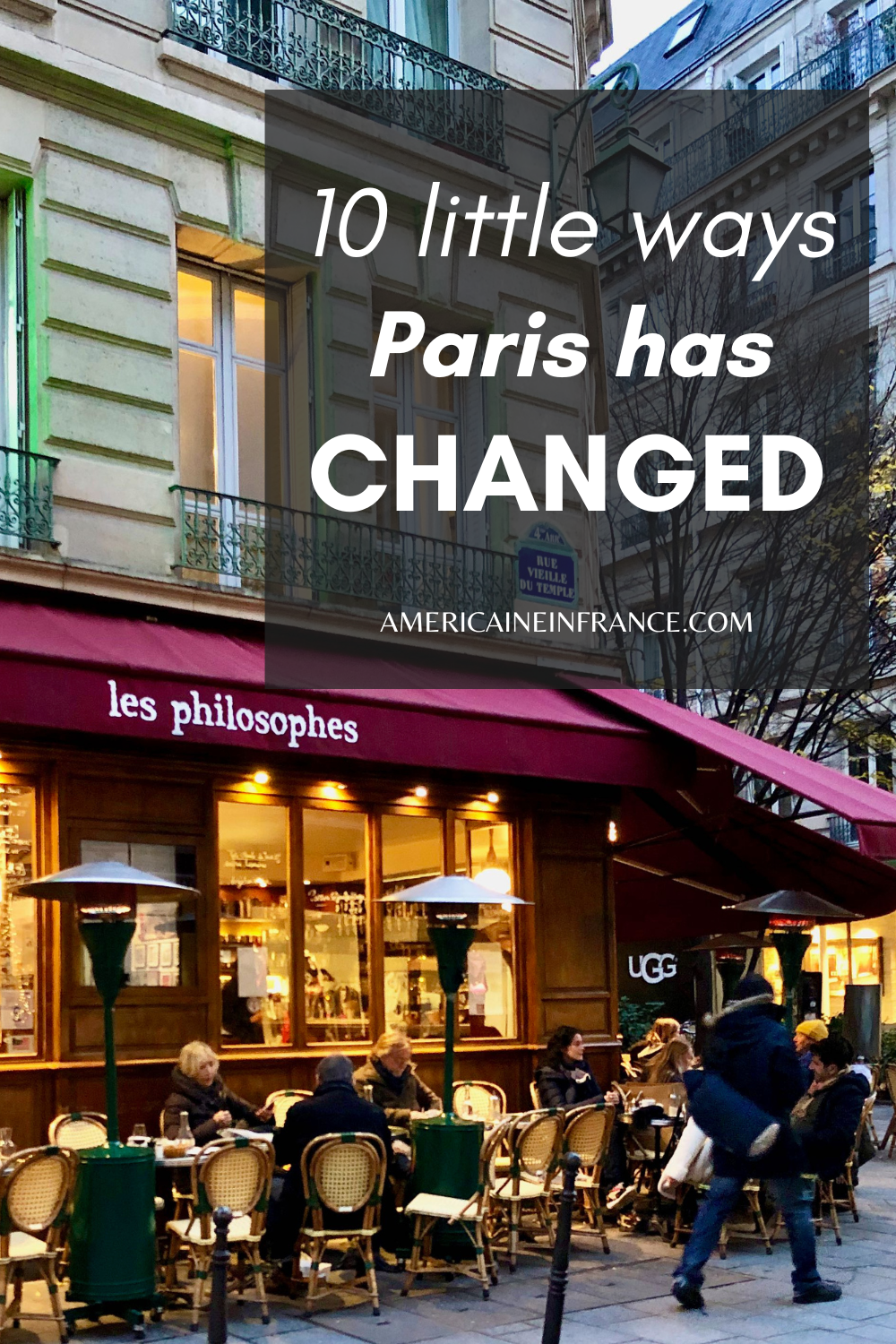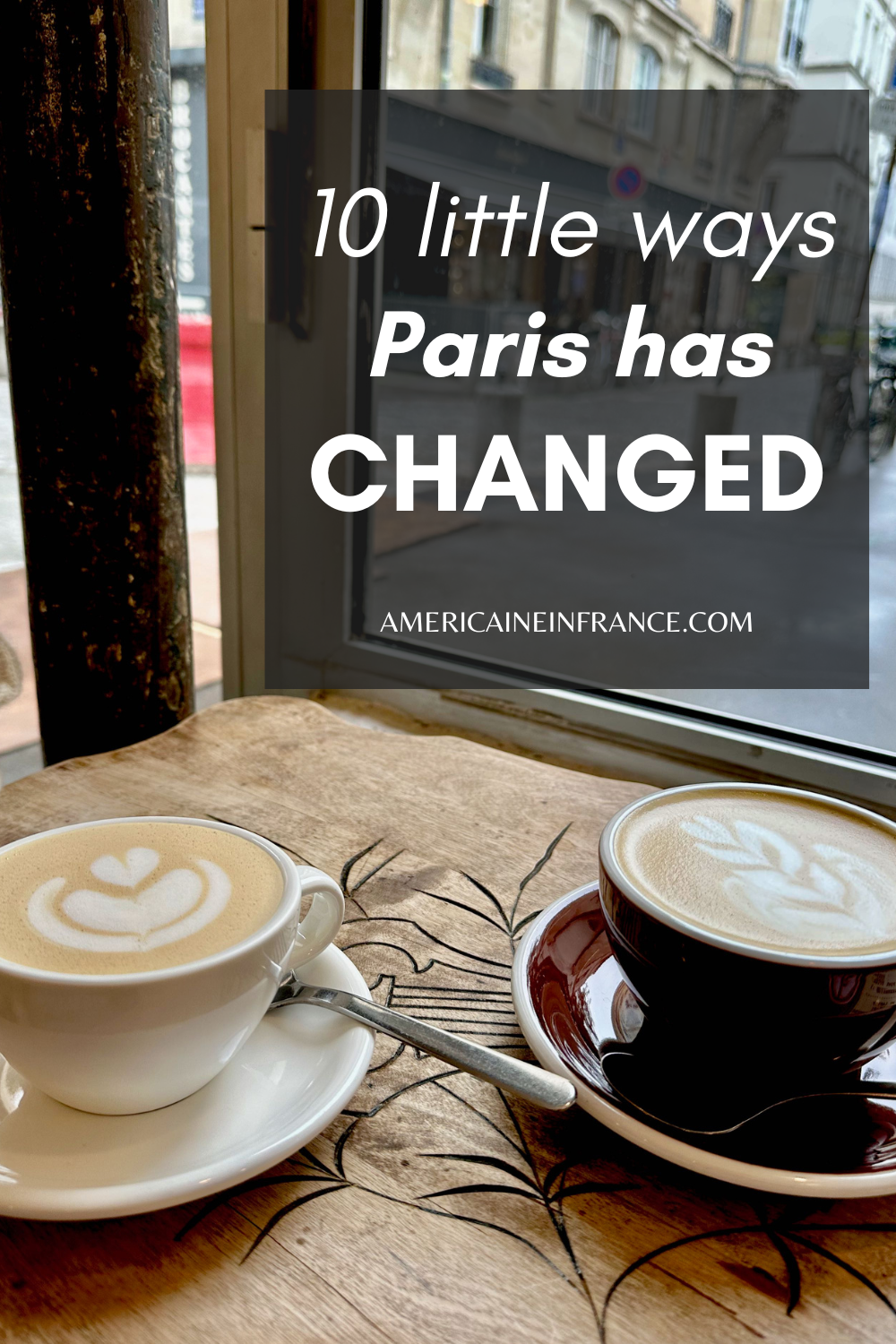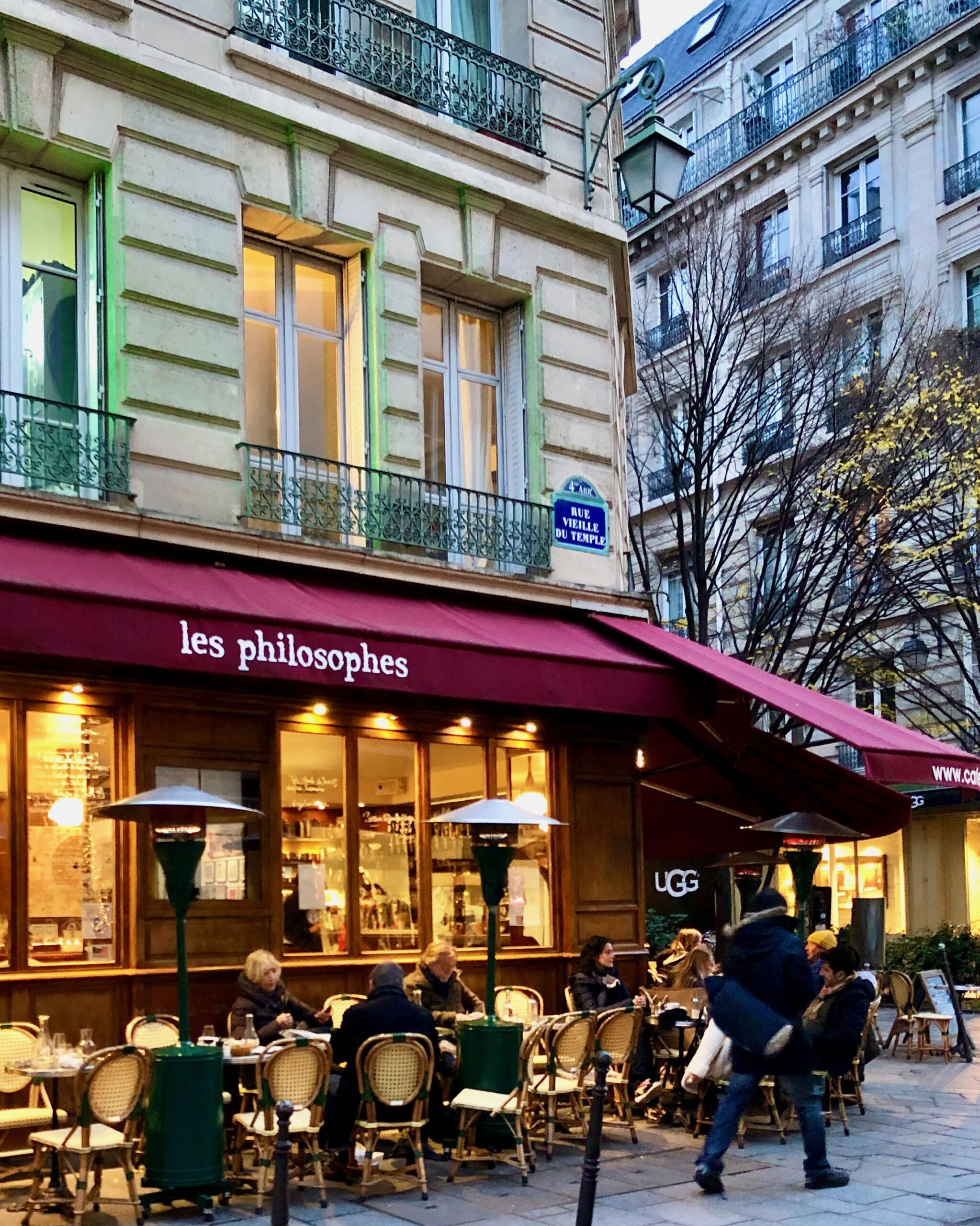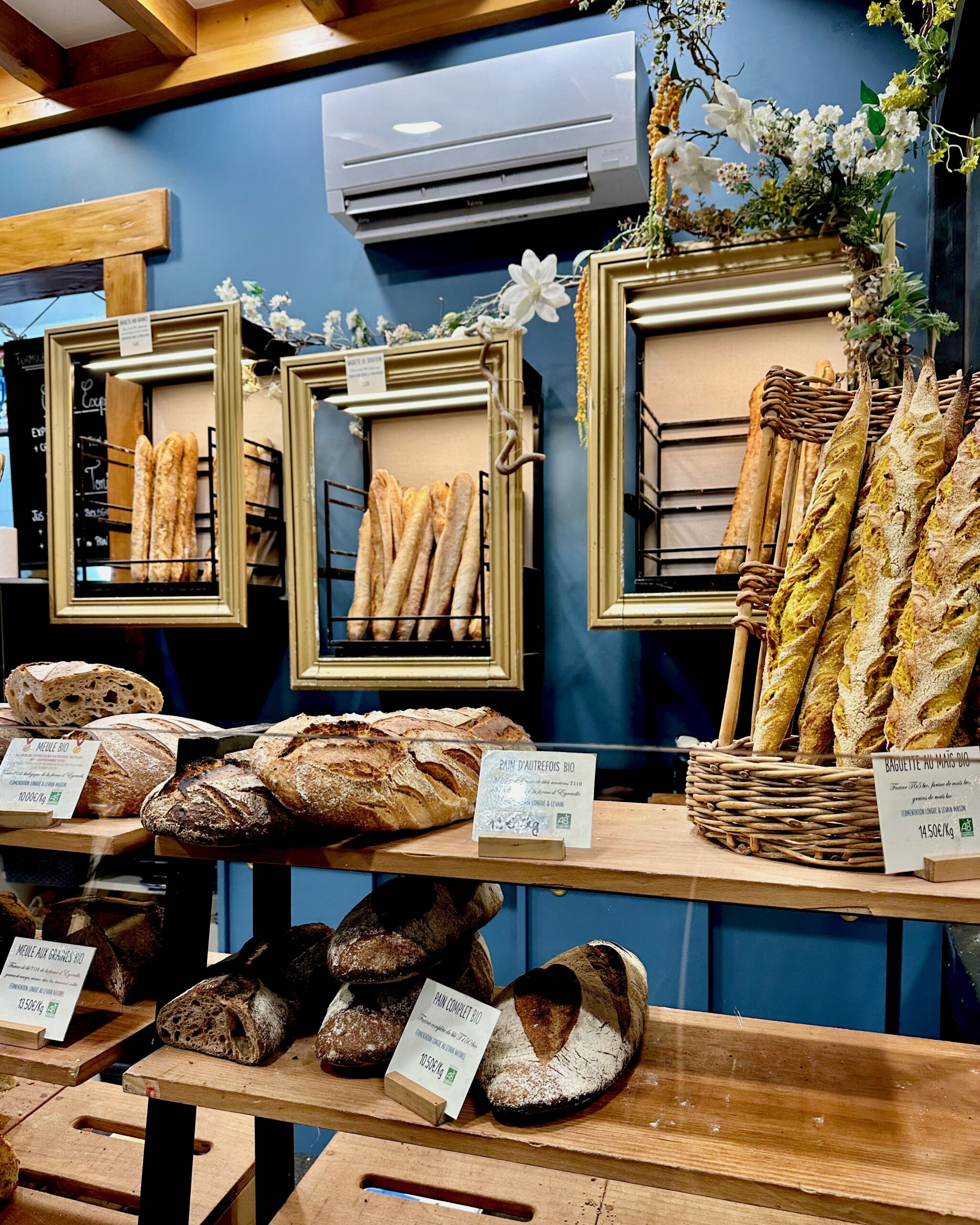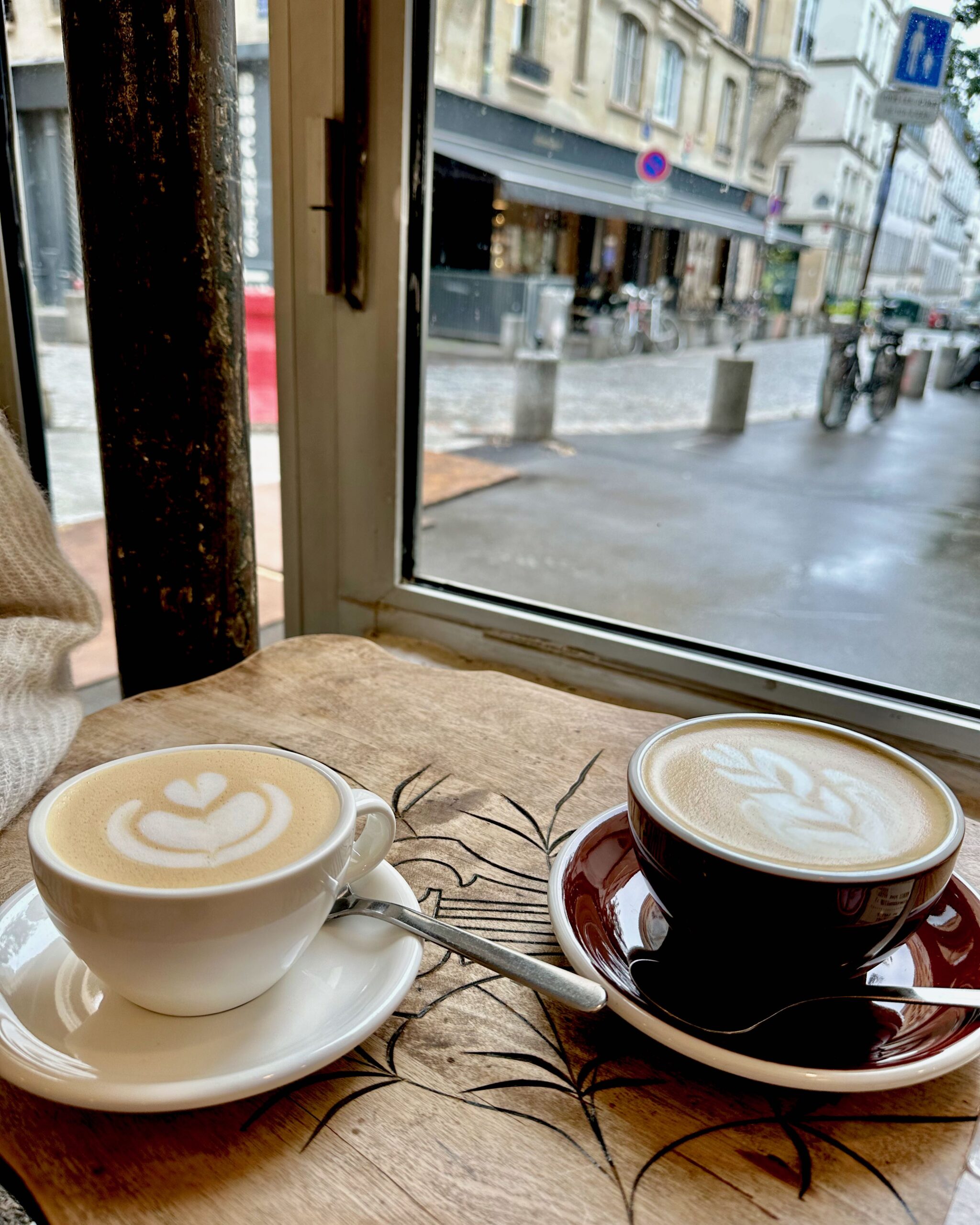This post may contain affiliate links, meaning that if you click and make a purchase, I may earn a commission at no additional cost to you. Read the full disclosure here.
I first lived in Paris in 2009 as an undergraduate student. Since then, I’ve traveled to and stayed in the capital multiple times before calling the city my home a few years ago. It’s been interesting to see firsthand how Paris has evolved over time. Here’s a list of some little changes that have stood out to me over the course of the last 15 years.
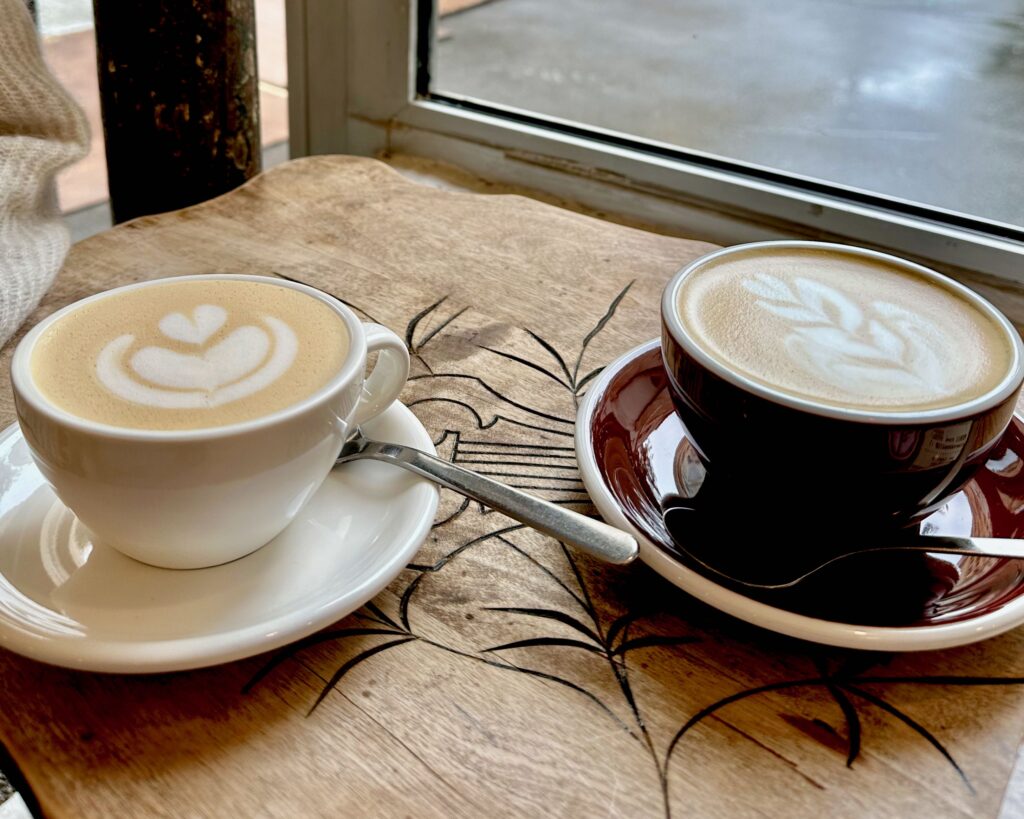
1. The Appearance of Hipster Coffee Shops
The Paris coffee scene in general has developed greatly in recent years. Gone are the days when the only place to get a coffee was at a traditional café.
In my opinion, Parisian cafés don’t generally have the best coffee anyways. They typically source beans from large distributors which are often low quality. As a result, instead of being an enjoyable drink to be sipped, I’ve often felt that the standard espresso from a Parisian café is just meant to get the job done by quickly upping caffeine levels.
There are a lot of excellent and cozy coffee shops all over Paris now where you can get a great cup of coffee, from an espresso or an americano to a latte or a flat white. Pour-overs and filtered coffee can sometimes be found on the menu as well.
Additionally, oat milk and other non-dairy options are readily available at places like these whereas you’d be met with a blank stare if you made such an audacious request at a regular café. My New England heart is particularly happy to see the emergence of iced coffee, although this is still a rare find.
📚 Related: For greater insight into the developing food, wine, and coffee scene in Paris, take a look at Lindsey Tramuta’s book entitled The New Paris.
2. No More Heated Outdoor Seating Areas
Heated outdoor seating was a huge characteristic of Paris café culture, extending the season of outdoor terraces well into the winter months. In Paris, this was particularly important to restaurateurs whose indoor seating areas might be relatively limited.
However, with the effects of climate change on everyone’s minds, it was time to consider new measures to reduce wasteful energy consumption. Unsurprisingly, the heating lamps that warmed up the outdoor areas came under scrutiny.
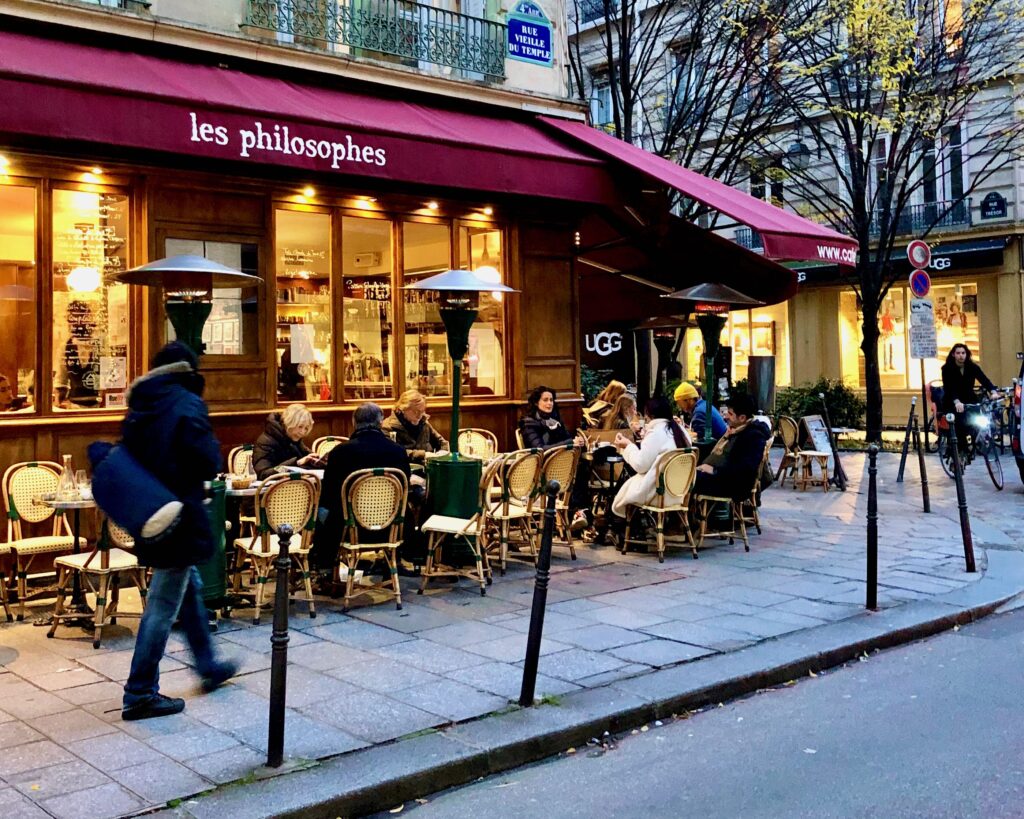
Although originally planned for the year prior, the ban on outdoor heating units came into effect in Paris in March 2022. This delay was enacted to give restaurateurs, a sector already hit hard by Covid measures, a little more time to recover revenue losses before needing to adapt yet again.
Many cafés, bars, and restaurants now try to tempt patrons with fluffy blankets neatly laid out on bistro chairs. I can’t say this works as well although it’s much more environmentally friendly!
3. Pay Toilets Have Mostly Disappeared
When I saw pay toilets in cafés and large brasseries, I was quite shocked. You’d head downstairs to the bathroom only to find a box with a small slot on the outside of the door where you’d need to insert a coin in order to gain access.
As a paying customer, you could simply ask the waiter for un jeton (a token) and use the facilities for free. This system was primarily a deterrent to prevent people from walking in off the street and using the bathroom without actually buying anything.
The last time I ran into one of these boxes was about a year ago. The box was not set up to function but continued to cling to the door as a relic. Functioning ones do still exist in Paris but will more likely be in high-traffic and/or touristy areas of Paris.
While restaurateurs in France are required to provide free restroom access to patrons, they are not required to provide the same service to anyone off the street. Many fast food restaurants have a keypunch pad on the bathroom door. You’ll need a pin code to unlock the door and the code can be found on your receipt.
Shopping centers, department stores, and train stations in Paris remain major holdouts in the pay toilet realm. Fortunately, there are other options. The majority of public toilets on the streets of Paris are free. Check out this Paris public toilet map to see where all of these public bathrooms are located.
4. Higher Baguette Prices
The price of the baguette has increased. I remember first buying a baguette at the grocery store in Paris for around 60 to 75 cents or at a bakery for about 80 cents to 1 euro. It used to be relatively easy to find a fresh baguette for less than 1 euro throughout the city.
Related: Everyday Things That Surprised Me About Paris When I First Arrived
My first core memory of Paris was walking to the nearest boulangerie first thing in the morning after a long-haul overnight flight and purchasing a fresh baguette. I ripped off the end, watching the steam escape. As I took my first bite, I marveled that something so good could possibly cost so little.
Nowadays, I often see regular baguettes (baguettes classiques) for 1€/1€10 in Parisian bakeries. Personally, I usually spring for une tradition (the artisanal version of the normal baguette) which I generally see costing between 1€20 and 1€35. You can find cheaper baguettes in grocery stores, although the prices there have also gone up, of course!
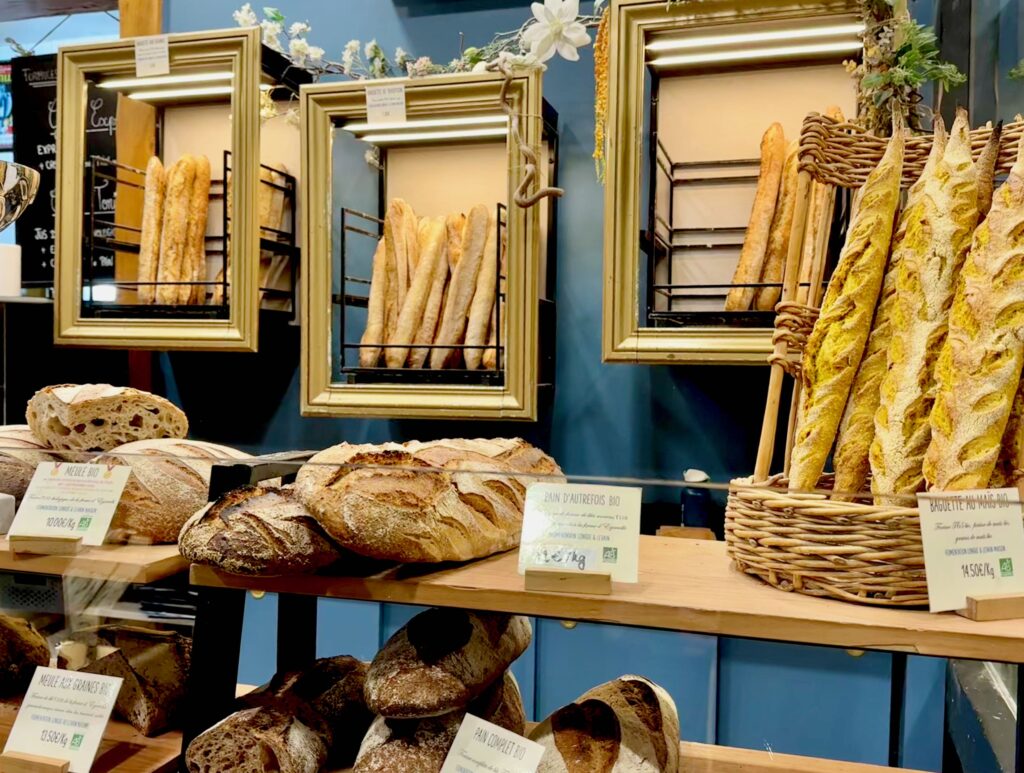
This may not seem like a significant price difference and prices are, of course, increasing for everything everywhere. However, crossing over the 1€ threshold for this staple product is certainly symbolic for many French people. I even noticed that some bakeries put up signs this past year apologizing for the price increase, noting that they kept their regular baguette at 1€ for as long as they could.
5. Greater Availability of American Products
Little by little, it’s been easier to find a lot of American favorites in Paris. The most noticeable product is the appearance of peanut butter on the shelves of mainstream French grocery stores.
Skippy is readily available if you’re craving an American classic but a number of French brands have entered the market as well. Mandy’ is one of my favorites currently among the natural peanut butters, and I usually find it at Monoprix.
Many grocery stores have an international section featuring various products. Interestingly, there always seems to be Marshmallow Fluff present on these shelves and I can’t help but wonder where this American stereotype came from… Do we really consume that much of it? Is it one of those regional things? Personally, I can think of quite a few other products I’d rather see available before fluff.
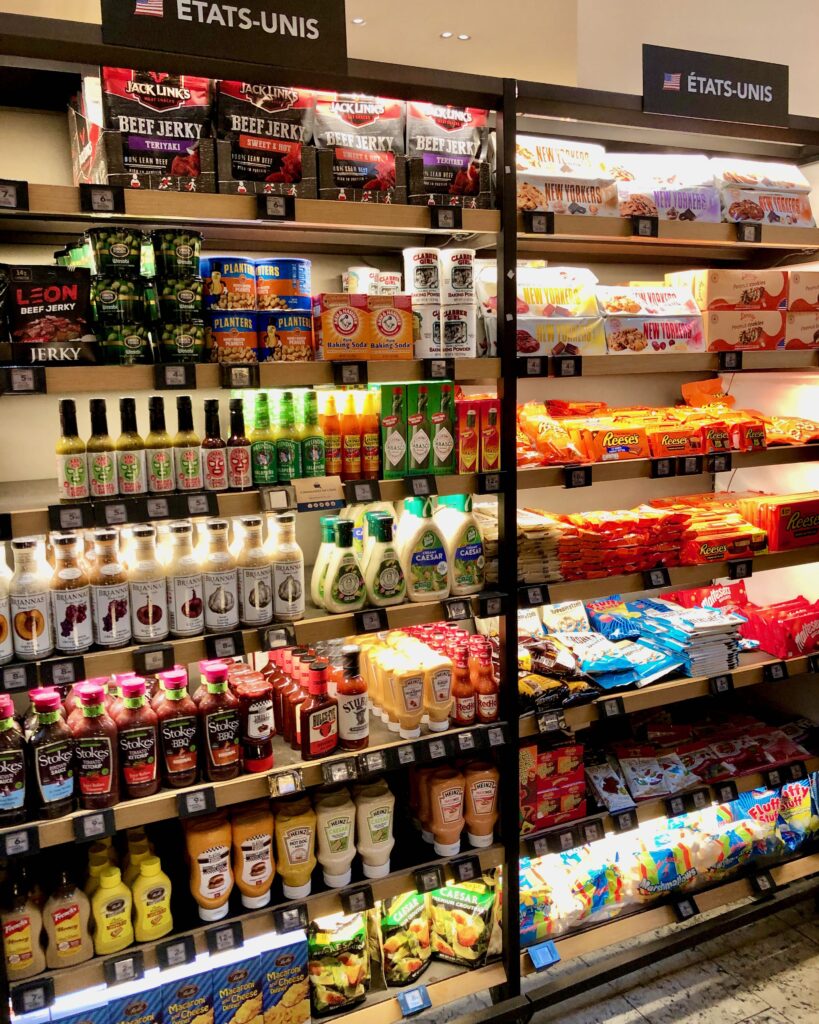
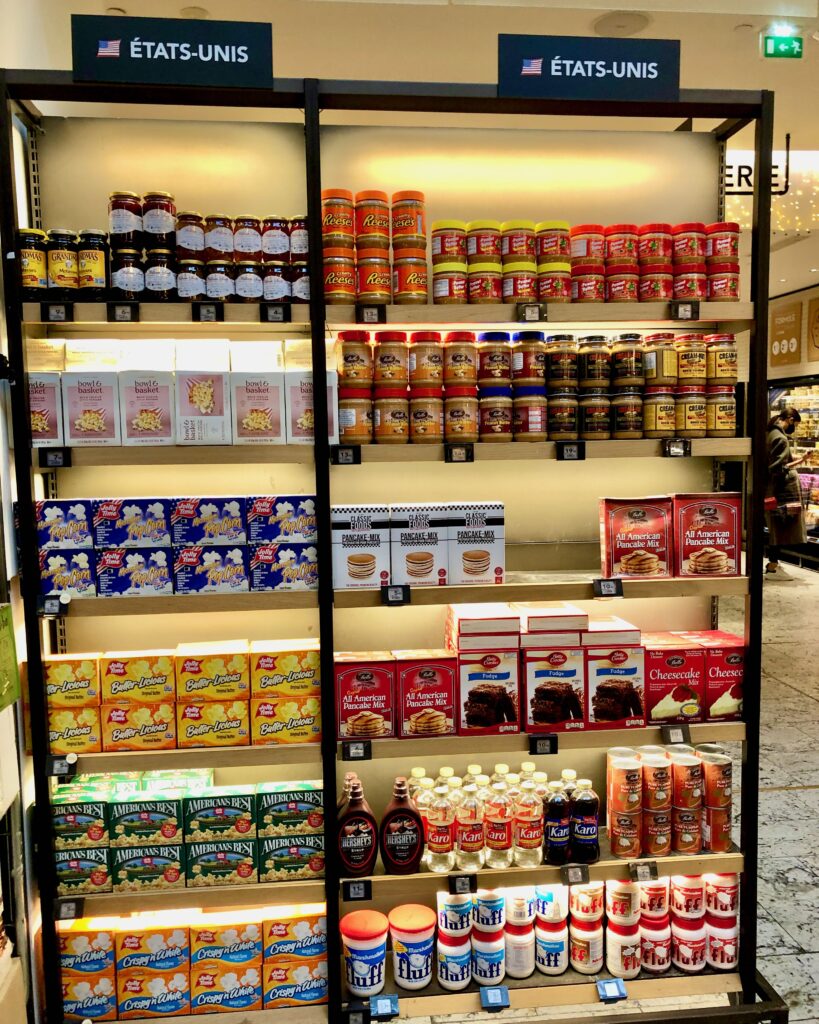
Several American grocery stores have popped up in the capital with imported food products from the United States. While other American grocery stores have come and gone, The Real McCoy has been open since 1990. In Good We Trust, another well-established store, opened in 2016. Sweet Escape, with two locations in Paris, and Cometeshop are newer boutiques on the scene. The latter has more than just American food products such as Bath & Body Works items and Yankee Candles (including Woodwick brand candles).
Related: Things I Bring Back to France From the United States
6. Increased Bike Usage
When I first lived in Paris, I never rode around on a Vélib, the capital’s public bike-sharing system. Inaugurated on July 15, 2007, the program was still very new at the time, and riding a bicycle around the city seemed intimidating to me!
The mayor of Paris, Anne Hidalgo, has been aiming to make Paris more bike-friendly. There are now tons of dedicated bike lanes with more in the works. The Covid pandemic was also a major impetus for these bike lane extensions, as many Parisians were opting for alternative modes of transportation to avoid the packed metros.
These days, you can witness the surge in bike usage, particularly around peak travel times when commuters head to work. Make sure to look both ways before crossing a bike lane in Paris because the peloton stops for no one!
7. Enlarged Pedestrian Zones & Car-Free Days
As the name indicates, the Paris Respire initiative has created and expanded little areas throughout the city where city dwellers can breathe, free from the presence of the usual culprits of city pollution. Some of these areas are classified as pedestrian zones throughout the year while other zones are closed to vehicles seasonally over the summer or on specific dates, such as the first Sunday of the month. The Paris Respire map has a key indicating the location of these pedestrian zones.
Notably, the center of Paris (the first four arrondissements) and the Avenue des Champs-Élysées are pedestrianized on the first Sunday of every month. The first time the Avenue des Champs-Élysées was pedestrianized for this initiative was in 2016. It’s pretty impressive to see this famous street being overtaken by pedestrians!
The city of Paris has also organized several Journée sans voiture. During this annual car-free event, personal vehicles are not allowed to drive anywhere within Paris proper. Buses and taxis are an exception but the idea is to encourage non-motorized methods of transportation. To this end, the capital often offers limited but free use of a Vélib’ bike, the public bike-sharing system in Paris.
8. Metro Modernisation & Expansion
Metros have slowly been creeping into the Parisian suburbs, providing more options for commuters. There are literally metro terminals that exist today that did not exist when I first lived in Paris.
The majority of metro lines are operated by a driver, but a few of them are automated, meaning that the trains are run without a driver. Line 1 was renovated little by little and became fully automatic in 2013. The full automation of Line 4 was finally completed in December 2023.
✨ Fun Fact! In case you were wondering, line 14 was the first fully automatic line, and it opened in 1998.
P.S. Metro lines that are automated are not affected by transportation strikes in Paris!
Paper metro tickets are slowly being phased out in Paris. For example, you can no longer buy a ten-pack of paper tickets. However, you can still buy single-ride tickets, which are particularly useful when heading to a specific destination located outside the limits of your normal transportation pass, like when going to the airport.
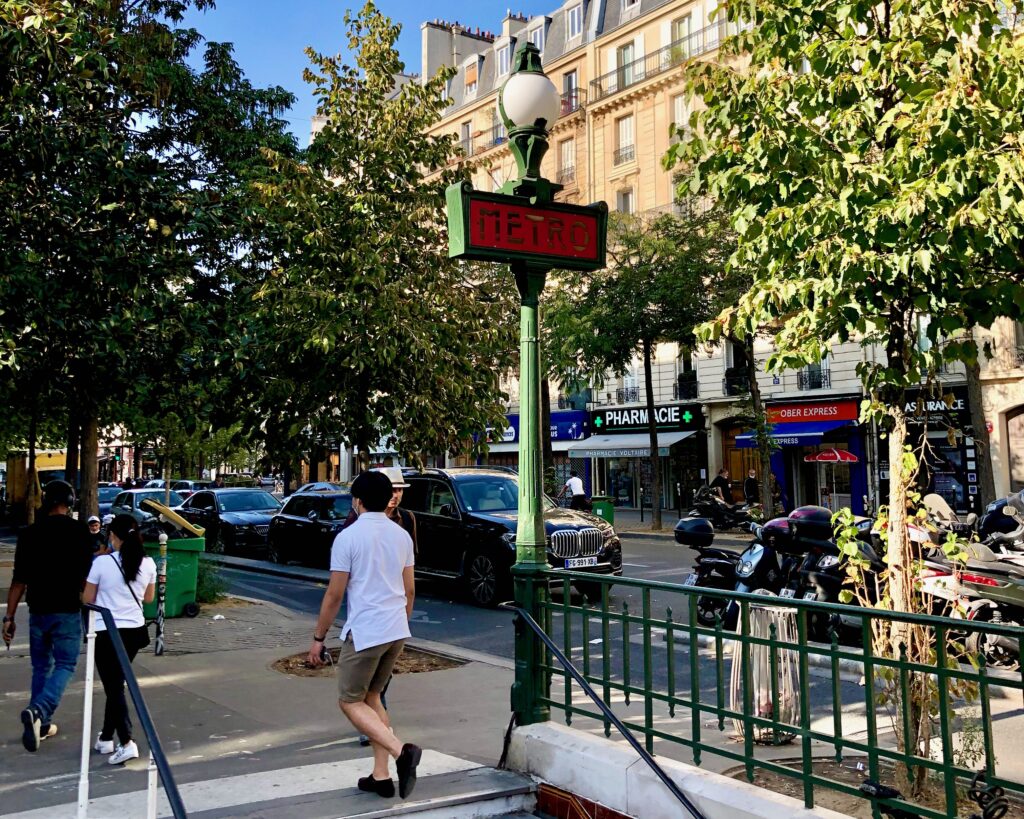
Navigo is a contactless card used to access transportation in Paris. Over time, more options have been created, namely the Navigo Easy Travel Card which is open to anyone (ideal for tourists!) and allows the user to pay for tickets through an app. As a Paris resident who doesn’t ride the metro all that often, I use the Navigo Liberté + which is linked to my bank account and simply debits what I owe based on the number of rides I take each month. Both of these cards were introduced in 2019.
9. Less Rigid Dress Code
Parisians have a reputation for high fashion. When I first arrived in Paris, I noticed that people generally looked very put together all the time. It was rare to see anyone in any kind of workout clothing on the streets, never mind the comfy sweatpants or casual leggings that are often staple items in the American wardrobe. Wearing athleisure or running sneakers when not actually exercising would make you stand out or even be on the receiving end of some judgmental looks.
Related: Things You Can Do in the States That You Can’t Do in France
In the summer of 2016, I remember walking to a yoga studio in leggings and feeling like everyone was staring at me. When I got to the studio, there was a changing room. Not one person arrived in yoga attire. Every single participant went to the locker room to change their clothing before and after the class. Fast-forward to 2023 and I’m going to a yoga studio again. All but one or two people arrive at the studio in leggings.
Without a doubt, there is more variety in terms of clothing on the streets of Paris now than there used to be. It’s common to see sweatpants, leggings, running shoes, white city sneakers, etc, particularly among younger generations. This trend was a long time coming, but Covid certainly helped push it along.
Time and time again, I continue to receive questions from readers about what they should pack for their trip to Paris. Systematically, I tell people to wear what they’ll be comfortable in! That being said, I wouldn’t recommend wearing anything at the extreme end of casual clothing on the streets of Paris, like pajama pants or fuzzy slippers. Similarly, it’s important to respect the dress codes of restaurants where a put-together look is more appropriate.
10. Fewer Cigarette Smokers
One of the most common complaints I hear from U.S. American tourists visiting Paris is the prevalence of smokers in the city. “Smokers are everywhere.” “Everyone smokes.”
If you’ve ever traveled to France, you won’t want to believe me on this one, but smoking has declined in Paris. The rate might even be lower than you think.
Smoking rates vary around the country. The île-de-France region, which encompasses Paris, boasts one of the lowest rates in the country at about 22% according to a 2021 report. This is a decrease from the estimated 29.3% of daily smokers in 2010. (Source below)
This difference might not seem significant. However, my personal experience and observations of smokers in Paris compelled me to look up these statistics to verify what I was noticing. I was certainly happy to see the decline in smokers in France and I hope that this trend continues!
If you’ve been lucky enough to see Paris over the years, what changes have you noticed in the capital?
